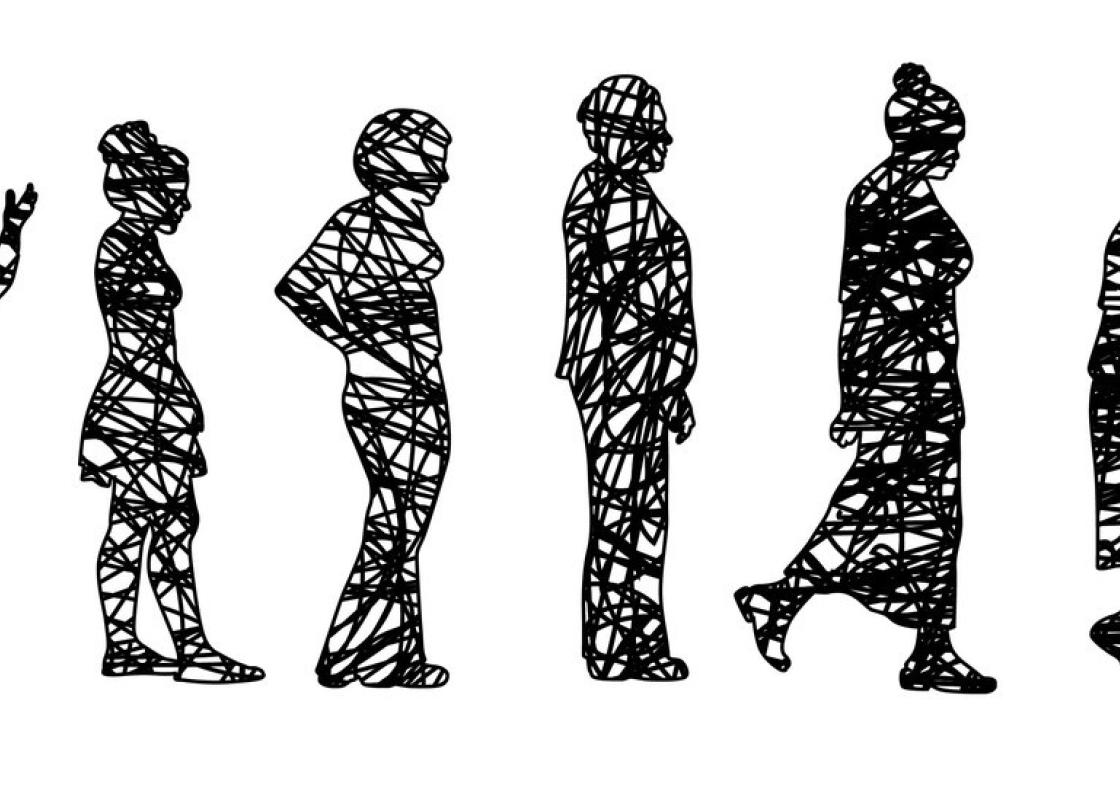Are women more ill than men are? And are women affected by other types of diseases? Are women’s health subject to fewer studies? Kilden genderresearch.no has just launched the report Hva vet vi om kvinners helse? (‘What do we know about women’s health?’) in collaboration with Norwegian Women's Public Health Association. The report is the result of the pilot project Kvinnehelseportalen.no (‘Women’s health portal’), and sheds light on some of these questions.
The two main reasons for long-term sickness absence in Norway are mental health and muscle and skeletal diseases.
“The aim of the report is to create a foundation for an online portal that documents and communicates Norwegian research on women’s health and health-related gender differences,” says Anne Winsnes Rødland, adviser at Kilden genderresearch.no and the author behind the report.
“By gathering and disseminating research based knowledge and drawing attention to the knowledge gaps, such a portal may contribute to ensuring an equal health service for both men and women.”
Missing gender perspectives
”Women’s bodies are different than men’s. We need more knowledge to better understand women’s health,” says Johanne Sundby.
Sundby is a medical doctor and professor at Department of Community Medicine and Global Health at the University of Oslo, and she is a member of the project’s resource group. Her areas of expertise are women’s health and reproductive health, and in 1999 she led the work with the White Paper Kvinners helse i Norge (‘Women’s health in Norway’).

”The White Paper uncovered major gaps when it comes to gender specific knowledge and gender perspectives in medical research,” she says.
”First of all, we documented that very few medications are tested on women, and that we know little about the use of medications during pregnancy despite the fact that chronically ill women choose to give birth. Moreover, we do not yet know why women are more away on sick leave and are more often incapacitated than men are. There has also been relatively little research on women’s mental health.”
In 2003, the Norwegian government created a women’s health strategy and initiated several measures. Among other things, a centre for women’s medical research was established at Oslo University Hospital, and new guidelines were drawn for including both genders in research.
According to Sundby, there are nevertheless major knowledge gaps, and several areas related to women’s health do not receive sufficient attention.
”In addition to the fact that knowledge about women’s health needs to be based medically on women’s physiology, we need to look at women’s place in society and know more about how women’s lives affect their health,” she says.
Majority of chronically ill are women
An important motivation behind the work she led back in 1999 was to examine why so many more women than men – at that time as well as now – were on sick leave.
”The two main reasons for long-term sickness absence in Norway are mental health and muscle and skeletal diseases. Women are overrepresented within both areas,” she says.
”Medical researchers have done little research on women’s illnesses. This is primarily because they have been afraid of what consequences it might have on the foetus if the woman is or becomes pregnant while medical treatments are being tested on her. Therefore, most medical treatments are tested on men,” according to Sundby.
I think it is important that women become more active in deciding what areas should be object for research.
”But why is this the case, and what may be done in order to direct medical research towards women?”
”I think it is important that women become more active in deciding what areas should be object for research, and they should also more actively participate in the research,” says Sundby.
She finds it typical that the consideration for women’s pregnancies and births has been cut to the bone. This is also one of the reasons why more and more women do not have room for children in their lives, she thinks. One example that illustrates this is the ideal that women should work full-time up until four weeks prior to the due date of birth.
”It is perfectly OK that we don’t pathologise pregnancy, but to many women pregnancy is a strain, and they may need to work reduced hours or be on sick leave in this period,” she says.
Sundby is therefore of the opinion that women’s reproductive health is one area that particularly needs more research.
”We also see an increasing body-image pressure in society today, which has resulted in exaggerated dieting, physical training and surgical procedures. This affects women and men differently, and here too there is need for research with gender perspectives,” she says.
Gender as separate perspective
According to Sundby, it is important that we not only look at gender as a variable, but that research is conducted on women and men separately.
”Many research topics are not addressed with gender perspectives although they are highly gendered. There is no use in doing research on both women and men unless gender is addressed as a factor that has significance for the result,” she emphasises.
”For instance, mortality among motor cyclists is a gendered problem, as almost everyone who dies in such accidents are men. In order to understand why this is the case, it is not sufficient that women are part of the data selection. We also need to examine the differences between men and women that may explain this statistics.”
Typical women’s diseases have previously had relatively low status, but this has changed.
Another example of a gendered research topic is breast cancer.
”Nearly everyone who are diagnosed with and die from breast cancer are women, but some men are also affected. Here it is also important to look at similarities and differences of risk factors for each gender.”
As a professor of community medicine, Johanne Sundby is also interested in how social class differences may have consequences for people’s health.
”We see systematic differences in health between women and men, but also between minority women and Norwegian women, for example. This shows that the way we live affects our health.”
Research meets practice
”A women’s health portal will summarise research results on women’s health and make these results easily accessible,” says Siri Vangen.
Vangen is a medical practitioner, leader of National Competence Service for Women’s Health at Oslo University Hospital and adjunct professor at University of Oslo. She has also been part of the resource group for the women’s health report.
”The report is important because it summarises and makes visible the fact that there is now a significant amount of knowledge on women’s health. It contributes to making this knowledge easily accessible to all potential user groups,” she says.

According to Vangen, a lot of work has yet to be done, however, and she emphasises that many aspects of women’s health remain to be explored.
”We still have a huge job ahead of us when it comes to research on women’s health. For instance, women suffer from chronical diseases and pains to a larger extent than men do,” she says.
”On which areas of women’s health do you see the biggest need for research?”
”We are only just beginning. All areas are important. But muscle and skeletal diseases is an important area, and possibly the area that affects most women. Anxiety and depression are also conditions that affect many women and that are more common among women than men.”
Also migraine, low metabolism and immune disorders are areas within women’s health that need more research, according to Vangen.
“Moreover, we need more knowledge on elderly women’s health and minority women’s health. And we have to continuously develop pregnancy and postnatal care.”
See also: How do gender perspectives in migration health look like?
More knowledge on women’s hearts
One area that has been subject for research in recent years is women’s heart disease.
“Heart disease is the most common cause of death for both genders. But the disease appears approximately ten years later in women than in men, and it often appears differently.”
“This is an important area that we fortunately now have more knowledge about,” says Vangen.
According to her, research on women’s diseases has traditionally suffered from a lack of prestige.
“Typical women’s diseases have previously had relatively low status, but this has changed. What used to be barriers have now been broken and turned into new opportunities,” says Vangen.
Translated by Cathinka Dahl Hambro.
See also: "Heart disease is the number one killer of women in Norway"



